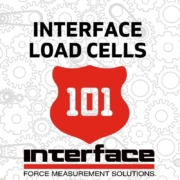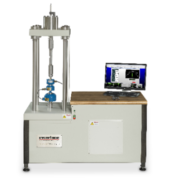Are Load Cells Used in Vacuum Environments?

Vacuum testing labs are essential for ensuring that products and materials are safe and dependable in vacuum environments. A vacuum environment is an area where there is little or no matter. This means that there are very few gas molecules present, and the pressure is incredibly low. Vacuum environments are often created using vacuum pumps, which remove gas molecules from an enclosed space.
Vacuum environments are used to simulate the conditions that products and materials will experience in space or other high-altitude environments. These types of testing labs typically have a vacuum chamber that can be evacuated to an incredibly low pressure. The vacuum chamber is then used to evaluate products and materials for a variety of properties. Engineers use vacuum environments in testing for reduced contamination, improving heat transfer, and to reduce the weight of products.
Tests performed in vacuum labs are used to determine the rate at which gases are released from a product or material and the ability of a product or material to withstand a vacuum without leaking. Thermal cycling tests are done to assess the ability of a product or material to withstand changes in temperature in a vacuum environment. Other tests are done to understand how the test article withstands exposure to radiation.
Vacuum testing labs are used by a variety of industries, including aerospace, medical, and defense. These labs are common for material process testing and used in R&D. Vacuum testing helps to identify potential problems with products and materials before they are used in a real vacuum environment. Engineers use this type of testing to improve the performance of products and materials and ensure they meet the required standards. Contact Interfaced to explore your options.
Can load cells be used in a vacuum environment?
Load cells can be used in a vacuum environment. However, not all load cells are created equal or suited for this specialized use case. Some load cells are designed that make them appropriate for vacuum environments, while others are not. Load cells that are not engineered to perform in vacuum environments may not be able to withstand the low pressures and outgassing that can occur in a vacuum. Using quality load cells that are manufactured by force measurement experts in sensor technologies is important in any consideration. It is critical to review the specifications and requirements with a qualified applications engineer.
Key considerations when choosing a load cell for a vacuum environment:
- Outgassing: Load cells that are used in vacuum environments will have low outgassing rates. This means that they will not release gases into the vacuum chamber, which can contaminate the environment and interfere with measurements.
- Mechanical strength: Load cells must be able to withstand the low pressures that can occur in a vacuum. They will also be able to withstand the conditions that can be generated by vacuum processes, such as outgassing and condensation. Form factor and model material of the load cell are important in choosing a load cell for this use case.
- Temperature range: Load cells will need to operate in a wide range of temperatures. This is important because vacuum chambers can be very cold, especially when they are first evacuated, or when they are used to simulate high altitudes or space.
If you are looking for a load cell that can be used in a vacuum environment, please review with Interface application engineers to determine if the model fits your test requirements. We also can offer custom solutions to ensure that the load cell maintains the accuracy and performance specifications based on your exact test plan.
Can a load cell be vented for use in a vacuum testing lab?
Technically yes, you can vent a load cell to be used in vacuum. This allows the internal cavity of the load cell to equalize with external vacuum. However, this does not prevent outgassing and can cause the gages and wiring to be subject to humidity and condensation.
Cabling is extremely important when using any sensor in this environment. There are options to make the load cells wireless using Bluetooth technology.
Caution: Interface recommends that all our products used in this type of environment are designed, built, and calibrated for use in this environment. Venting an existing load cell can alter the performance and damage the cell. By designing the load cell with venting for use, we can ensure that it will meet the vacuum test range.
Interface also can install thermocouples to work with the sensor to detect temperature in this type of testing environment. In fact, our engineers have designed load cells to package the thermocouples inside the form factor for convenience and performance benefits.
Interface engineers have worked with testing labs for decades. We are available to assist with any use case requirements to determine the best measurement solution.








